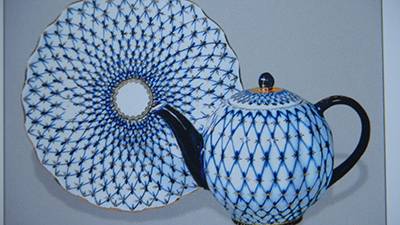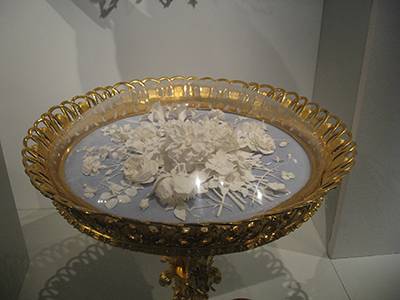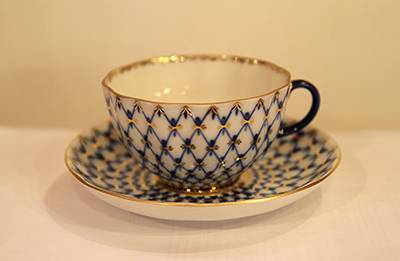
The St Petersburg Imperial Porcelain Factory was founded in 1744 by the daughter of Peter the Great (Elizabeth) and first produced porcelain (dinner services, decorative vases, plates, sculptural compositions, figurines of animals, and much more) exclusively for the Imperial Court, never manufacturing even two identical products.
The richness of decoration rivaled that of European porcelain and the under glaze painting even surpassed European counterparts. However, the most interesting period of the history for the factory started after the famous October Revolution, when they invited famous artists to be designers and very unusual things appeared (for example propaganda porcelain).

In 1950 the service Cobalt Net (see photos) by Anna Yatskevich, which would become legendary, began to be produced on a mass scale on another artist‘s “Tulip” form created for the 200th anniversary of the factory in 1944.
Later there appeared a transformed version of a painting for the most often reproduced service of the twentieth century – Golden Net (1948) and Chequered Pattern (1950). The service won the Gold Medal at the World exhibition in Brussels in 1958 for the harmony of form and painting as well as for simple and genuine decorative design.

The St Petersburg Porcelain Museum is one of the best places to purchase a souvenir as part of our St Petersburg tours & St Petersburg shore excursions. At the St Petersburg Porcelain Museum you can buy some porcelain in the shop downstairs or just look at the beautiful items made by modern masters. The shop looks like one more room of the museum. For specially curious tourists we offer to arrange an excursion to the factory itself (right now we call it the Lomonosov Porcelain Factory, after Mikhail Lomonosov the Russian Scientist) to see how the real miracle appears and even take part in the creation of porcelain.
